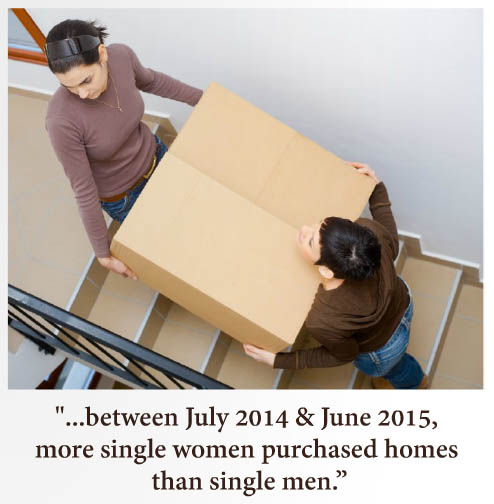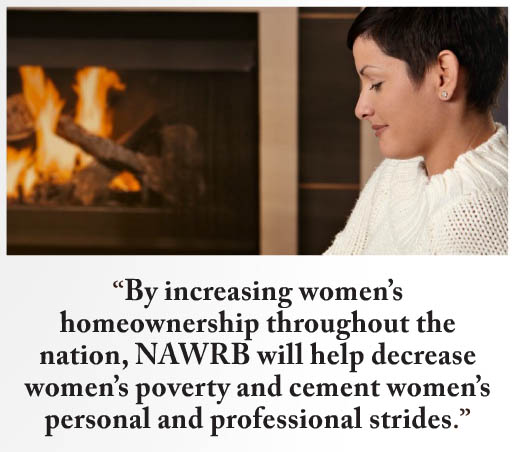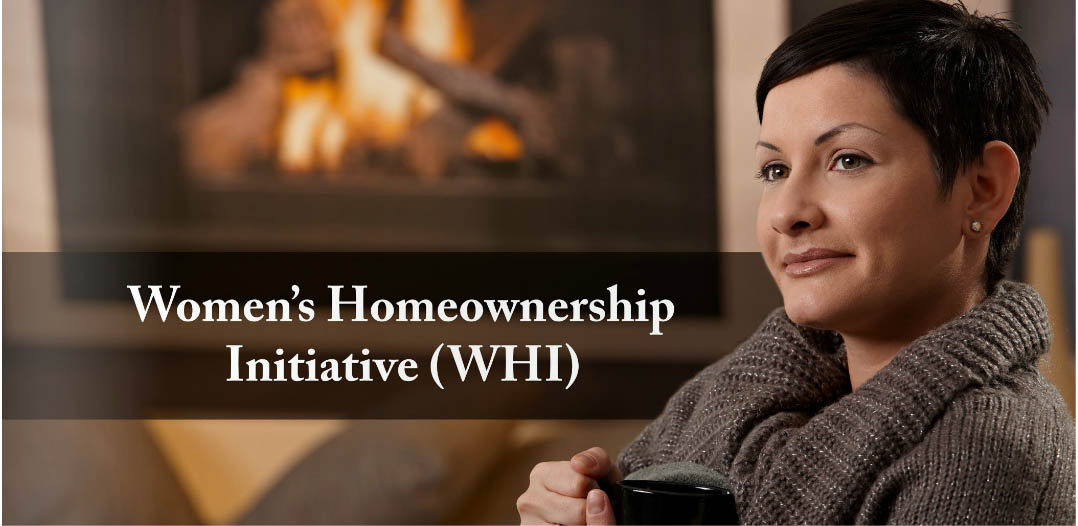Homeownership is a central part of the American dream, for most people, it is the American Dream. Owning a home connotes success and achievement.
As women progress in the workforce and receive the consideration and participation they have earned, it is essential to fortify their growth with strong economic foundations. Why is it important for women to become homeowners? Homeownership provides the financial security to safeguard women’s progress, and paves the way for future generations.
Women continue to face obstacles in their career paths, with a pervasive 27 percent gender wage gap and lack of advancement in hierarchy. This disparity significantly impacts women’s ability to incur savings and secure a home to call their own, as their paychecks don’t travel nearly as far as men’s.
There are encouraging facts, however. According to 2014 Census Bureau data, there are 18,057,000 female homeowners in the United States. Ten million live alone, 6.7 million live with relatives without a husband present and 1.3 million live in two-or-more person households.
The desire for homeownership is present and firm among women. With the prevalence placed on pay parity which would significantly increase their access to homeownership, female buyers are poised to have a formidable effect on the housing industry.
 Home Affordability and Potential Homebuyers According to the U.S. Census Bureau, more than 1 in 4 families with children under the age of 18 are headed by a single parent and more than 3 out of 4 single parent families are headed by a female. In the U.S., 30.9 percent of families headed by women with no husband present live below the poverty level. Of these, 40.5 percent households have children below 18 years of age and 47 percent have children under five years of age. The economic challenge of living in financially underprivileged states has profound negative effects on these children and plays a major role in preventing their mothers from living above the poverty line and ultimately transitioning into homeownership.
Home Affordability and Potential Homebuyers According to the U.S. Census Bureau, more than 1 in 4 families with children under the age of 18 are headed by a single parent and more than 3 out of 4 single parent families are headed by a female. In the U.S., 30.9 percent of families headed by women with no husband present live below the poverty level. Of these, 40.5 percent households have children below 18 years of age and 47 percent have children under five years of age. The economic challenge of living in financially underprivileged states has profound negative effects on these children and plays a major role in preventing their mothers from living above the poverty line and ultimately transitioning into homeownership.
Apart from these women living in poverty, inability to purchase homes has given rise to a new trend of women living with their families rather than living alone. According to the Pew Research Center, in 1940, 36.2 percent of women aged between 18 and 34 lived with their family, parents or other relatives excluding their spouse. In 2014, 36.4 percent of women in this age group were still living with their families. One of the focal reasons for this is affordability; not many women have sufficient incomes to afford a home and in some cases even rent.
• The number of women living at home dropped to 24 percent in the late 1950s and early 1960s and slowly rose between 1960 and 2000; the Great Recession caused the sharp increase after 2008
• In 2014, young adults enrolled in college were more likely to live with their families than those not enrolled in college: 45 percent versus 33 percent
• Married women leave their family homes to live with their husbands, but now women are delaying marriage. Only 30 percent of young women were likely to be married in 2014 compared to 62 percent in 1940
• Census Bureau data proves that now , on average, women enter marriage at age 27, compared to 21.5 years in 1940
• Age break-up for women living with family as of 2014:
– 56.1 percent women aged 18-24
– 28.4 percent aged 25-29
– 16.2 percent aged 30-34

Facts on Women’s Homeownership
According to NAR’s Recent Home Buyer Profiles, a survey conducted among homebuyers who purchased homes between July 2014 and June 2015, more single women purchased homes than single men.
• Household composition of recent buyers
– 67 percent married couples
– 15 percent single females
– 9 percent single males
– 7 percent unmarried couples
• 15 percent of all respondents were single female buyers
– 37 percent bought a home because of the desire to own a home
– Median age – 50
– Median income – $57,300
– 39 percent first-time buyers
– 87 percent bought previously owned homes
– Median home price – $169,100
– 72 percent bought a detached single-family home
– Convenience to friends and family was a major factor, with 43 percent considering it
• 32 percent of all respondents were first-time buyers
– 18 percent were single females
• 13 percent of the total respondents bought multi-generational homes
– 13 percent were single females
• Eight percent of all respondents were buyers of senior housing
– 24 percent were single females
• 22 percent of all respondents downsized their homes or desired to buy a smaller home
– Median age – 60
– 18 percent were single females
• 21 percent of respondents were in active military duty or veterans
– Six percent were single females
• Four percent of all respondents were LGBT Buyers
– 25 percent were single females
 Conclusion
Conclusion
Negatively impacted by the Great Recession, the percentage of single women homebuyers decreased from 20 percent in 2010 to 15 percent by 2015. However, women’s homeownership is growing, driven namely by professional progress leading to increasing purchasing power and the willingness to sacrifice other necessities in order to afford a home.
The NAWRB Women’s Homeownership Initiative (WHI), calls for improved data collection regarding women’s homeownership, special lending services for women home buyers, and hosts regional meetings for real estate professionals. By increasing women’s homeownership throughout the nation, NAWRB will help decrease women’s poverty and cement women’s personal and professional strides.

 Login
Login

